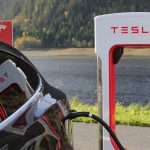For the twelfth consecutive year, NASA has been recognized as the Best Place to Work in the Federal Government among large agencies. This accolade highlights the consistent satisfaction and engagement of NASA’s workforce. The agency’s commitment to exploring the unknown and advancing knowledge continues to inspire and drive its employees.
In past years, NASA’s recognition as a top workplace has been tied to its numerous pioneering projects and scientific advancements. The agency’s sustained success in the rankings can be attributed to its culture of innovation and the significant milestones it achieves annually. Comparing earlier recognitions, the emphasis remains on the agency’s ability to attract and retain top talent through challenging yet rewarding work. This long-standing recognition underscores NASA’s role not just as a leader in space exploration but also as a model employer within the federal sector.
NASA’s continued success in these rankings is remarkable considering the dynamic and demanding nature of space missions. Each year, the agency pushes the boundaries of technology and science, which requires a highly motivated and satisfied workforce. This recognition, year after year, suggests that NASA has managed to cultivate an environment where its employees feel valued and engaged despite the high stakes and challenges inherent in their work.
Key Achievements in 2023
NASA’s workforce accomplished several notable feats in 2023, including setting a new American record for the longest astronaut spaceflight and announcing the Artemis II crew. These milestones reflect the agency’s ongoing commitment to pushing the boundaries of space exploration. NASA also launched the Deep Space Optical Communications experiment and partnered on the sustainable flight demonstration project, later designated as X-66. Additionally, the OSIRIS-Rex mission marked a significant achievement with the first U.S. mission to collect an asteroid sample, enhancing our understanding of celestial objects.
Climate and Earth Observations
The year 2023 also saw advancements in NASA’s climate and Earth observation missions. The agency launched the U.S. Greenhouse Gas Center and the Earth Information Center, providing crucial climate data. The SWOT mission offered new perspectives on Earth’s surface water, while the TEMPO mission contributed valuable air quality data. These efforts underscore NASA’s broader mission to enhance our understanding of Earth’s environment and contribute to global climate science.
Survey and Recognition Process
The Best Places to Work rankings, compiled by the Partnership for Public Service since 2003, analyze federal employee viewpoints on various aspects of their jobs, including leadership and work-life balance. The survey responses are evaluated to produce rankings in four categories: large, midsize, and small agencies, along with their subcomponents. NASA’s consistent top ranking reflects its success in creating a supportive and motivating work environment.
Actionable Insights
- NASA’s success in employee satisfaction stems from fostering innovation and engagement.
- Significant projects and milestones drive employee motivation and workplace satisfaction.
- Effective leadership and a positive work-life balance are critical for maintaining high employee morale.
NASA’s string of accolades as a top workplace highlights the importance of a motivated and innovative workforce in achieving groundbreaking successes. The agency’s focus on challenging projects and significant scientific advancements attracts top talent and keeps employees engaged. Comparing this to past recognitions, it is evident that NASA’s consistent top ranking is not just about the achievements but also about the supportive environment it creates for its workforce. The emphasis on work-life balance, effective leadership, and employee satisfaction continues to set NASA apart, ensuring it remains a desirable employer within the federal government.










